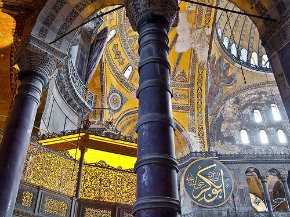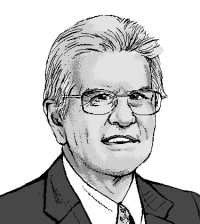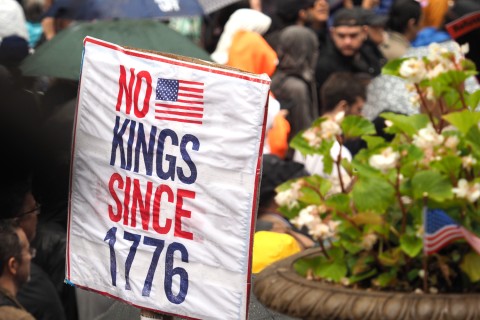Whose holy ground?

In his poem "Little Gidding," T. S. Eliot warned his readers not to take too intellectual an approach to places of worship; instead, he urged, "You are here to kneel/ Where prayer has been valid." Yet around the world many believers wrestle with the question of just whose prayers have been valid at particular sites. In Europe particularly, that question may prove to be inflammatory.
From a global perspective, American Christians are unusual in that their churches rarely occupy sites sacred to other faiths. But throughout history new religions often appropriated older sacred places for their own purposes. London's St. Paul's Cathedral stands over the remains of a pagan temple, and the Metropolitan Cathedral in Mexico City is within the sacred precinct of Aztec Tenochtitlán. Invaders normally assumed that dominant religions should by right occupy the greatest buildings, and they grabbed sites accordingly. Great religious buildings are often palimpsests: a little investigation can uncover older layers of faith. Cambridge's beloved Round Church (a long-standing center of evangelical zeal) reputedly replaced the synagogue of the city's medieval Jewish quarter.
Read our latest issue or browse back issues.
Such displacements are much in evidence across Europe and the Middle East, where Christians and Muslims so often battled each other and where frontiers shifted frequently. For a thousand years, the world's greatest Christian church was Hagia Sophia in Constantinople, which became a mosque in 1453. Some great Islamic centers, like the Great Mosque of Damascus, have a Christian (and often pagan) prehistory. When the Muslims conquered Spain, they naturally converted Toledo's venerable Roman church into a mosque, which it remained for 400 years until the Christian reconquest. That mosque in turn gave way to the High Gothic cathedral that we see today.
Across much of southern Europe and the Balkans, many Christian churches stand, literally, on Islamic foundations. The process of conquest and Christianization is most obvious in Córdoba, which at its medieval height was the greatest Islamic city in the Mediterranean world. Visitors to Córdoba are very familiar with the Moorish architecture of the former Great Mosque, the Mezquita. Following the Christian takeover in 1236, the building became a cathedral and the minaret became a bell tower—but the place is still generally known as the Mezquita Catedral.
So frequent, in fact, have been such turnovers of ownership that it seems pointless to argue over the original title of a given place of worship. If a given sacred site was once pagan, then Christian, then Muslim, then again Christian, the most painless solution would seem to be to accept present realities. Damascus, in short, should retain its Great Mosque, while St. Stephen's in Budapest continues as a cathedral.
In recent years, however, two powerful forces have threatened to reopen potentially painful debates over the ownership of holy places. One is the growing fundamentalist militancy that has reshaped many faiths, and which leads activists to claim their supposed rights in uncompromising terms. Extremist Hindus demand the restoration of temples that were supposedly replaced by mosques, and they sometimes seek to enforce their wishes by mob violence. When rioting mobs destroyed a mosque at Ayodhya in 1992, the resulting communal violence killed thousands and sparked a national political crisis. Radical Islamists believe, likewise, that Muslims can and must retrieve all lands that ever belonged to their ancestors, regardless of the wishes of present-day populations.
The other new factor is of course demographic, namely the peaceful migration that has over the past half century created sizable Muslim communities in many European countries. Italy today has a million Muslims, Spain rather more. As a proportion of total population, the numbers are not large, but they are growing, and migrant communities are becoming wealthier and more self-confident. Native-born Muslims inevitably become curious about the religious roots of their new lands, and they seek to restore broken connections.
To date, the main focus of attention has been Córdoba, which was once so central to Islamic culture. Islamic groups in Spain—which are generally noted for their moderation—have officially asked the Vatican for permission to organize prayers within the building. This request falls a long way from demanding control of the property. More worrisome, though, small groups of activists have tried to assert claims more aggressively, leading to scuffles.
The Vatican has responded coolly to Muslim demands, undoubtedly because it fears entering a slippery slope. In a few years, might European Muslims be insisting on their own worship space not just in Córdoba cathedral but in Palermo, Seville, Granada, Toledo and dozens of other shrines? Might extremists use such campaigns as an excuse to target these and other Christian sites for violent action? And what would happen if Christians tried to recover the many former churches in the Middle East that are now Islamicized? Surely it would be best to let sleeping mosques lie.







